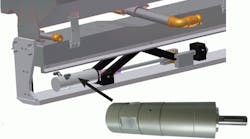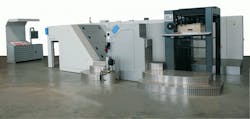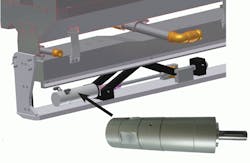In today’s fast-paced world, consumer buying decisions are often made on the spot in just a few seconds. An eye-catching package among overflowing retail shelves and multiple options can make all the difference in steering a shopper’s choice.
Thus, marketers spend countless hours on striking designs, but converting them to practical packaging — that protects the product inside while being visually appealing — is the job of engineers like the ones at H.C. Moog GmbH, a machine-engineering company based in Rüdesheim am Rhein, Germany.
For decades, this family-run company has designed and manufactured sheet-fed gravure printing presses that turn out high-quality packaging materials. Despite the global predominance of offset printing for packaging and high-finish printing, the gravure process lets users create value-added refinements to make a product stand out from its competitors, explains Achim Kurreck, the company’s managing director.
Gravure printing means the printing elements are etched depressions — known as cells — generally produced by laser onto the printing form (cylinder or polymer plate). Before printing, the entire form is dipped into an ink bath, and a blade “squeegees” excess ink from the surface. Only the ink required for printing remains on the cells. An impression roller then presses the material to be printed (paper, cardboard, or film) onto an image carrier. Contact pressure and adhesion force transfer ink to the material. The depth and size of the cells define the color intensity, and the resulting graphic quality and resolution are excellent.
One of the company’s latest machines is the Moog1 TBR Compact 740/1040, a multi-functional gravure press that handles sheets up to 740 by 1040 mm in size with a maximum output of 12,000 sheets per hour. It permits sheet-fed printing on conventional gravure cylinders or on digital photo-polymer plates. “The core piece of the machine, the double-circumference impression roller, is made from a high-quality casting. This means we were able to raise the linear pressure for embossing without having a negative effect on the machine’s service life,” says Kurreck.
But transferring ink to the print cylinder required new ink sumps. Ensuring an optimum mixture of ink while minimizing consumption means adjusting the height of the sumps to match printing requirements. This task demanded a drive that can operate in a potentially explosive atmosphere. That’s why they chose a Basic Line air motor from Deprag Schulz GmbH, Amberg, Germany. The 400 W (0.54 hp) vane motor mounts on the ink sump inside the press. With a nominal speed rating of 60 rpm and a basic torque of 63.6 Nm (47 lb-ft) it drives a screw mechanism that lifts and lowers the sump.
Air-motor advantages
Vane air motors operate on a simple principle. A series of axial vanes fitted into radial slots run the length of a rotor, which mounts eccentric with the bore of the motor’s housing. Air pressure acting on one side of the vanes generates motion and torque, with motor power controlled by throttling air flow.
Compressed air is a safe and reliable energy resource — there are no hazards created by electrical contacts and leads. That’s why air motors are often used in potentially explosive areas, explains Dagmar Dübbelde, Deprag’s product manager. All Basic Line air motors are ATEX-approved for use in explosive atmospheres. So Moog did not face additional delays or costs in obtaining ATEX compliance, another feature that persuaded them to opt for the Deprag units, says Kurreck.
The air motor’s power density also helped with the decision. Depending on the version, the motor has only a fifth the mass and is a third the size of an equivalent electric motor. Output from air motors is nearly constant over a wide range of speeds, letting them operate optimally within a wide range of changing loads.
The motors cannot overheat because compressed air expands and cools as it converts pressure into kinetic energy. They also cannot be overloaded. Instead, an air motor will stall without being damaged and will restart without a problem — any number of times.
Air vane motors are also robust devices that require little maintenance. The only parts on Basic Line motors that need replacing at specified intervals are the vanes. And when this is necessary, maintenance engineers do not have to dismantle the unit, explains Dübbelde. The air motor remains in its assembled position while a technician loosens a few screws and removes the end cap, then uses tweezers to remove the vanes and insert new ones. The entire process takes only a few minutes, says Dübbelde.
Quality printing
With heightened interest in unusual and offbeat packaging to arouse consumer interest, experts at H.C. Moog view sheet-fed gravure printing as the ideal process for generating the exclusive packaging that is in demand today. It can even make use of bronzes or inks with metallic pigments that are increasingly popular as a sign of a high-quality product.
The Moog1 TBR Compact 740/1040 is suitable for stand-alone production or as a pre- or post-processing machine in an offline combination with other sheet-fed printing presses. “It can even print quite challenging short runs extremely efficiently and with exquisite results,” says Kurreck. He views this technology as ideal and cost-effective for producing high-end product packaging. The machine is capable of printing on paper and cardboard (coated, uncoated, and laminated) as well as non-stretch films, along with many other substrates. And the Moog1 TBR Compact has no problem with security printing to protect products from counterfeiting.
Information for this story was provided by Deprag Schulz GmbH. For more information, visit www.depragusa.com. For more information on H. C. Moog, visit www.hcmoog.de.



